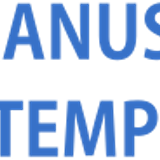Co2 Storage Capacity Estimation Of Depleted Oil And Gas Reservoirs In Indonesia
Abstract
Implementation of co2 capture and geological storage technology at the scale needed To achieve a significant and meaningful reduction in co2 emissions requires knowledge of The available co2 storage capacity. Various geological formations located across many Islands in indonesia appear to be potential to store the anthropogenic co2, particularly in Depleted oil and gas reservoir. These depleted oil and gas reservoirs are appropriate Candidates for co2 storage. However, the capacity of this geological formation has not Been estimated yet. The objective of this study is to estimate the storage capacity of depleted Oil and gas reservoirs in indonesia using the methodology, developed by carbon Sequestration leadership forum (cslf). Screening result from our databases showed there Were 103 depleted oil and gas fields were considered depleted from their np/ult ratio (hydrocarbon cumulative production over ultimate recovery) which were > 55%. However, Only 48 fields had complete data to estimate. We used the methodology that was Initially developed by cslf but then it had been simplified by poulsen et al. We considered This methodology as the most convenient to use in this country scale of assessment despite Of any simplification had been made. Estimation result showed riau and south sumatra Region have large storage capacities which are around 229 and 144 mtco2 respectively. The estimates of co2 storage capacity reflects the actual capacity that was based on data Availability during the assessment. The potential storage capacity might change as data Becoming more available. Hence, the storage capacity map resulted from this study is not Conclusive estimation. However, this study indicates that indonesia has huge potential of Co2 storage in depleted oil and gas reservoirs.
Keywords
Full Text:
PDFReferences
Bachu, S., Bonijoly, D., Bradshaw, J.,
Burruss, R., Christensen, N.P. Holloway, S.,
and Mathiassen, O.M., 2007, ” Estimation of
CO2 storage capacity in Geological Media – Phase
”, Washington: Carbon Sequestration Leadership
Forum.
Bachu, S., 2003, ”Screening and ranking of sedimentary
basins for sequestration of CO2 in geological
media in response to climate change”, Environmental
Geology.
CO2CRC, 2008, “Storage Capacity Estimation,
Site Selection and Characterisation for CO2 Storage
Projects”, Cooperative Research Centre for
Greenhouse Gas Technologies, Canberra.
CO2CRC Report No. RPT08-1001.
DOE, 2008, ”Carbon Sequestration Atlas II of
The United States and Canada”, US Department
of Energy Office of Fossil Energy and National
Energy Technology Laboratory.
Gibson-Poole, C.M, 2008, “Site Characterisation
for Geological Storage of Carbon Dioxide: Examples
of Potential Sites from Northwest Australia”.
Thesis (PhD), the University of Adelaide.
Poulsen, N., 2009, ”Geological assessment for
CO2 storage in the Bohai Basin, East China”,
COACH Project, Geological Survey of Denmark
and Greenland (GEUS).
Span, R. and Wagner, W., 1996, “A New Equation
of State for Carbon Dioxide covering the Fluid
Region from the Triple-point Temperature to 1100
K at Pressures up to 800 MPa,” J. Phys. Chem.
Ref. Data, Vol. 25, No. 6, pp. 1509~1596.
Stevens, S.H., Kuuskra, V.A. and Gale, J.
, “Sequestration of CO2 in depleted oil and
gas fields: global capacity, costs and barriers”. In:
D J. Williams, R.A. Durie, P.McMullan, C.A.J.
Paulson & A Y Smith (eds.) Greenhouse Gas
Control Technologies: Proceedings of the Fifth
International Conference on Greenhouse Gas
Control Technologies, 13-16 August 2000,
Cairns, Australia. CSIRO Publishing, pp. 278-283.
Van der Meer, L.G.H., and Egberts, P.J.P., 2008,
“A General Method for Calculating Subsurface
CO2 Storage Capacity”. Offshore Technology
Conference.ˇ
DOI: https://doi.org/10.29017/SCOG.34.1.791

This work is licensed under a Creative Commons Attribution-NonCommercial-NoDerivatives 4.0 International License.






